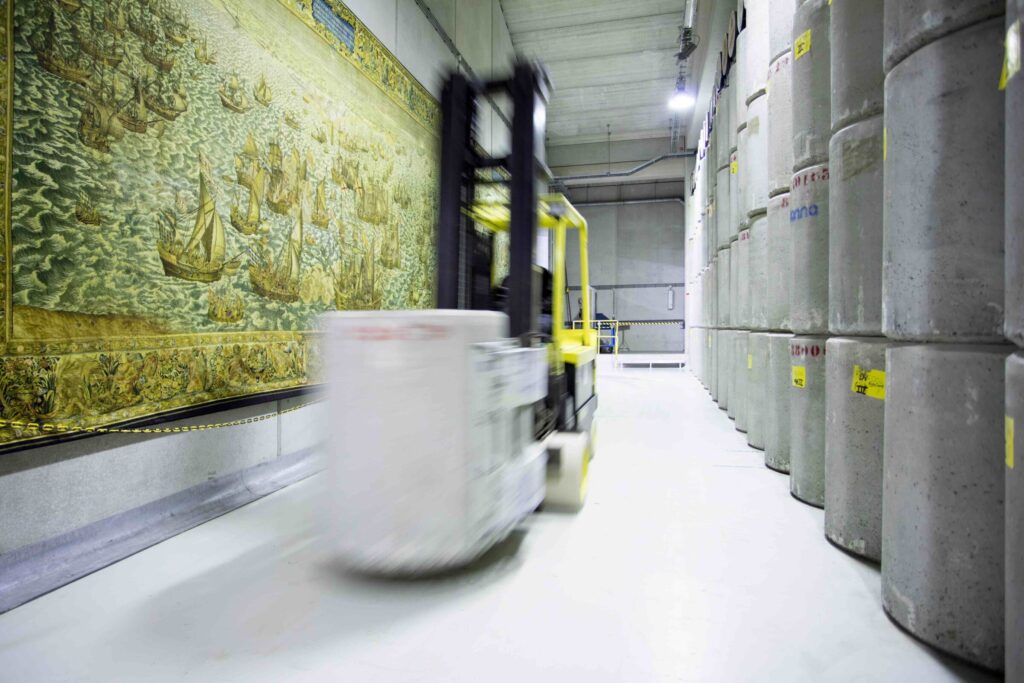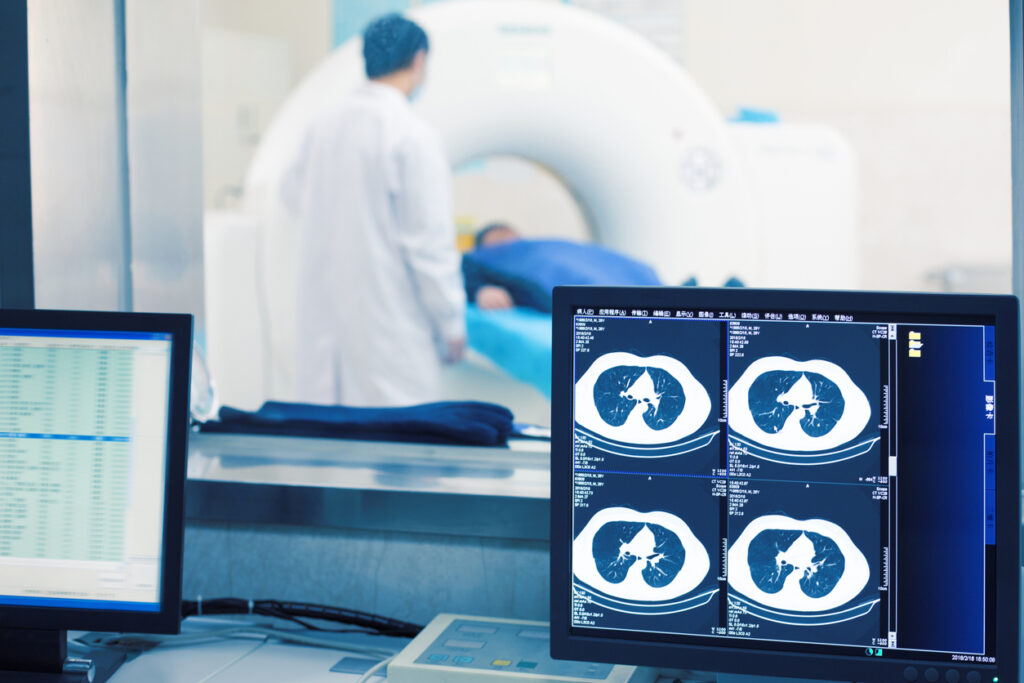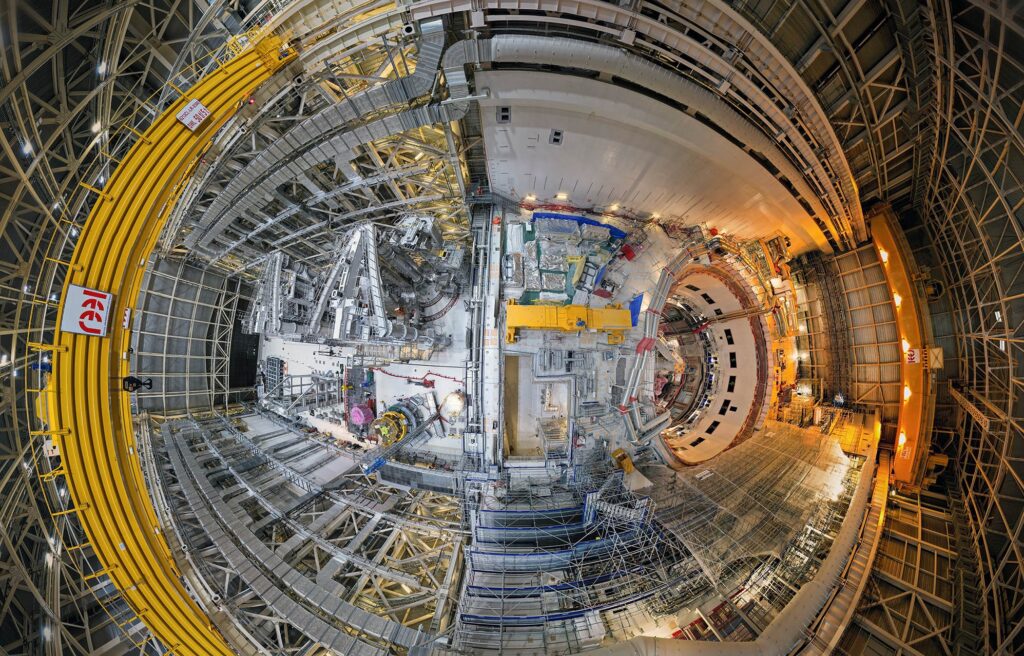
How safe is nuclear energy?
The safety of the nuclear energy chain (from mining to waste storage) is extremely high.
Strange as it may sound, accidents like the 1986 Chernobyl accident contributed to this safety. Even stricter international regulation and control arose. There are also strict national requirements for the nuclear sector. The Dutch nuclear power plant, for example, is among the 25% safest in the world.
Western nuclear power plants are continuously improved, new ones are built as safe as possible. They often use “passively safe” safety systems that work with gravity. All systems are double or triple engineered and work even under extreme conditions and without human operation. An accident may happen in a nuclear power plant, but it will always be able to be brought to a safe state.
In the Western world, there is international oversight and cooperation around safety. Knowledge and new insights are published and thus shared with each other. In the Netherlands, the Nuclear Safety and Radiation Protection Authority (ANVS), which falls under the responsibility of the Minister of Infrastructure and Water Management, keeps a close eye on the safety of the plant. The safety situation is regulary reported to parliament.
International supervision of nuclear power plants is in the hands of the International Atomic Energy Agency, the IAEA. This is an independent organization, part of the United Nations, which oversees the safe and peaceful use of nuclear energy. Protecting people, society and the environment from the harmful effects of ionizing radiation is central to the work of their Department for Nuclear Safety and Security. Whether the cause is an unsafe act or a security breach, it strives to provide a strong, sustainable and visible global framework for nuclear safety and security. The IAEA also conducts regular inspections of member states’ nuclear facilities. The Dutch government also invites the IAEA for inspections or a second opinion.

What happens with the radioactive waste?
Wherever radioactive materials are handled radioactive waste is produced. Wether it is for the production of medicine, research objectives, industry or power generation there will be radioactive waste material, Established in 1982, the Central Organization For Radioactive Waste (COVRA) is the company that makes the solution for Dutch radioactive waste a practical reality. The basis for the solution is that radioactive substances naturally lose their hazardousness. With the emission of radiation, a radioactive substance decays and thus the hazard disappears. Radioactive waste must therefore be disposed of in a place where the radiation can do no harm to people and society and must be kept out of the environment for as long as it takes for the radioactivity to disappear. This is done all over the world in two steps: first storage above ground and then disposal in deep underground. COVRA has the facilities in Zeeland for the safe management of all types of radioactive waste for a period of at least 100 years. However, caring for the waste does not stop after 100 years. Financial provisions are already being made and necessary technology worked out for the next step in radioactive waste management: final disposal. The now third national research program on final disposal of radioactive waste (OPERA) is part of this.
Photo ©COVRA

Is there enough uranium in the world?
Uranium is not a rare material. It is about as common on earth as tin or lead. The International Atomic Energy Agency (IAEA) in Vienna and the Nuclear Energy Agency (NEA) in Paris publish the so-called “Uranium Red Book” every two years. This contains a current overview of the stocks and uses of uranium. Here the stocks are linked to the cost, which is required to extract the uranium. Over 7 million tons of uranium have been found, of which about 5.3 million tons can be extracted at the current market price. Per year all nuclear power plants combined use about 64,000 tons, so we can go on for about eighty years.
When new power plants are added in the future, uranium will become scarcer and the price will go up. Then it will become attractive for mining companies to invest in the exploration of new reserves and smaller reserves can still be tapped profitably. By the way, the price of uranium hardly affects the cost of atomic power, which is mainly determined by the construction costs of the nuclear power plant itself.
Despite the fact, that there is still plenty of uranium, it is of course sensible to use it economically. This is also happening; there is a general trend in nuclear power plants to get more and more energy from the same amount of uranium. Furthermore, uranium that was reserved for military purposes in the past is now being converted so that it can generate energy in nuclear power plants. Used uranium is also being recycled and alternative fuels are being used in nuclear power plants. One example is so-called MOX nuclear fuel, which consists of recycled uranium and plutonium.

What are medical isotopes and how are they used?
Nuclear technology is very important to our health. The use of radioactivity and radiation in the treatment of various cancers increases survival rates. Medical isotopes, or radionuclides, are radioactive substances used in nuclear medicine. Medical isotopes are the raw material – the active ingredient – for nuclear drugs. The medical isotope is coupled to a carrier molecule, or tracer. In this way, the radioactive substance can be taken to the right place in the body. There, the radioactive substance emits so-called ionizing “radioactive” radiation.
Medical isotopes and are also used in pain management and diagnosis. Nuclear physicians use radioactive material to determine whether organs are functioning properly and to detect cancerous tumors at an early stage. Medical isotopes emit radiation that is used to make diagnoses, such as by administering it to patients undergoing PET or SPECT scans. It is vital that a correct diagnosis be made so that the right treatment for the patient can be determined. In addition, therapeutic isotopes are used to treat cancer patients, such as in radiation or brachytherapy. In this therapy, the isotope is inserted to attack malignant cells internally.
Medical isotopes can be used for diagnosis but also for treatment. Radiation can be used to take a “picture,” such as a PET or SPECT scan. With these scans, the function of organs can be visualized, and certain disease states can be diagnosed. Within diagnostics, fluorine-18 is a commonly used isotope for PET scans. Molybdenum-99/technetium-99m is by far the most commonly used isotope for SPECT scans, accounting for 80% of all nuclear medical operations worldwide. In the Netherlands, the Mo-99 is used about 300,000 times a year. The radiation can also be used to locally destroy tumor cells. We then speak of its therapeutic application. With the development of new carrier molecules, there are more and more therapeutic applications. Therapeutic isotopes are used to treat various types of cancer.

What is the difference between nuclear fission and nuclear fusion?
In fission, an atom breaks apart, creating heat and waste. In nuclear fusion, two atoms “melt” together, creating additional energy and hardly any waste. So fusion has advantages. A fusion reactor, ITER, is currently being built in France to gain experience with it. Fusion, the nuclear reaction that powers the sun and stars, is a promising long-term option for a sustainable global energy supply without carbon emissions. Harnessing the power of fusion is the goal of ITER, designed as the key experimental step between today’s fusion research machines and tomorrow’s fusion power plants. The ITER project is a global partnership of 35 countries.
American company SHINE Medical Technologies is developing beam-target fusion machines and using their neutron radiation for short-term fusion applications. The company designs, manufactures and operates innovative fusion systems for short-term applications such as medical isotope production and industrial component inspection. In 2021, the company announced that it has selected the municipality of Veendam in the province of Groningen as the site for its European production facility for medical isotopes.
photo ©ITER

How innovative is the nuclear sector?
Innovation is in full swing within the nuclear industry. Researchers are constantly searching for such things as better fuels for power plants, more efficient nuclear power plants and new medical isotopes.
Generation IV nuclear power plants
Fourth-generation reactors make more efficient use of nuclear fuel, achieving higher efficiency that leaves much less radioactive waste. Using the same amount of natural uranium, the new reactors can generate up to 50 times more energy than previous generations. These innovative reactors are even capable of reproducing energy from existing radioactive waste. There are six types of fourth-generation reactors. Three of them are thermal reactors and three are fast reactors. The thermal reactors use a moderator to slow neutrons to thermal or slow neutrons, which are more likely to be trapped in an atomic nucleus. The fast reactors can work as breeder reactors and can also transmute actinides in nuclear waste into less and less hazardous waste.
New medical isotopes
The Netherlands has a top position in the field of isotopes. Intensive collaborations between universities, hospitals and manufacturers, among others, have led to a number of innovative and highly effective treatments with fewer side effects. Scientific developments are not standing still.
New research
There is also plenty of innovation in the field of research. Research focuses on various areas, such as renewable energy, materials and health, both internationally and nationally. Examples include research in solar cells and batteries and medical isotopes for the diagnosis and treatment of cancer.

Can you make a bomb with nuclear power plant fuel?
There is a worldwide agreement to only use low-enriched uranium in nuclear power plants. This uranium has about 5 percent fissile atoms. You can’t make an atomic bomb with that. For that you would need tens of percent fissile atoms in your nuclear fuel.
But the other way around is possible: reactor fuel can be made from surplus nuclear weapons. Disarmament treaties have been concluded worldwide and the number of nuclear weapons has been reduced since then. Part of these treaties is the “downblending” of “weapongrade material. This means mixing the highly enriched material from nuclear weapons with depleted uranium to about 4-5%. This can then serve as fuel for generating electricity in a nuclear power plant. This uranium is then no longer suitable for nuclear weapons.
Photo: Fuel containers in the storage building©-ENGIE-Electrabel

More questions?
Do you have a different question? Or are you press looking for more information? Please contact us using the contact form.
